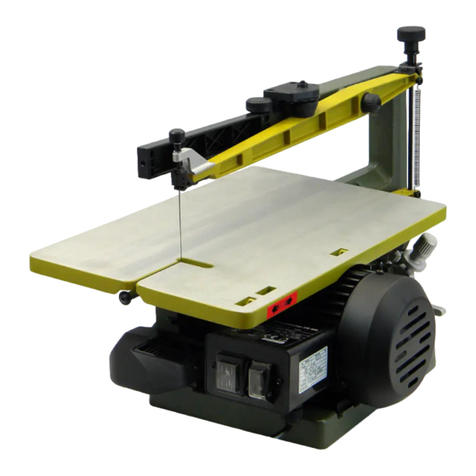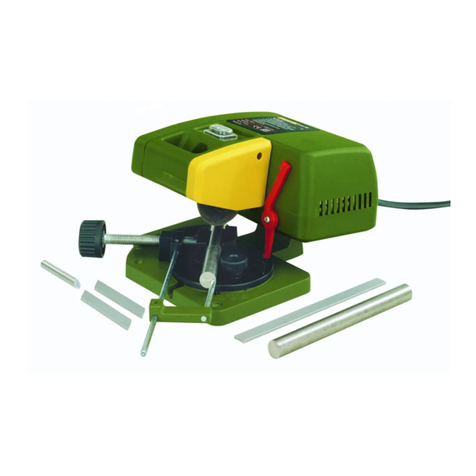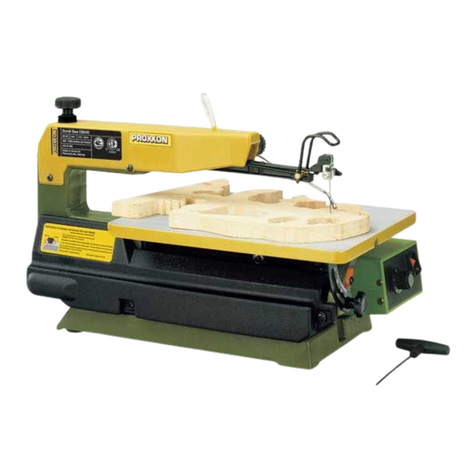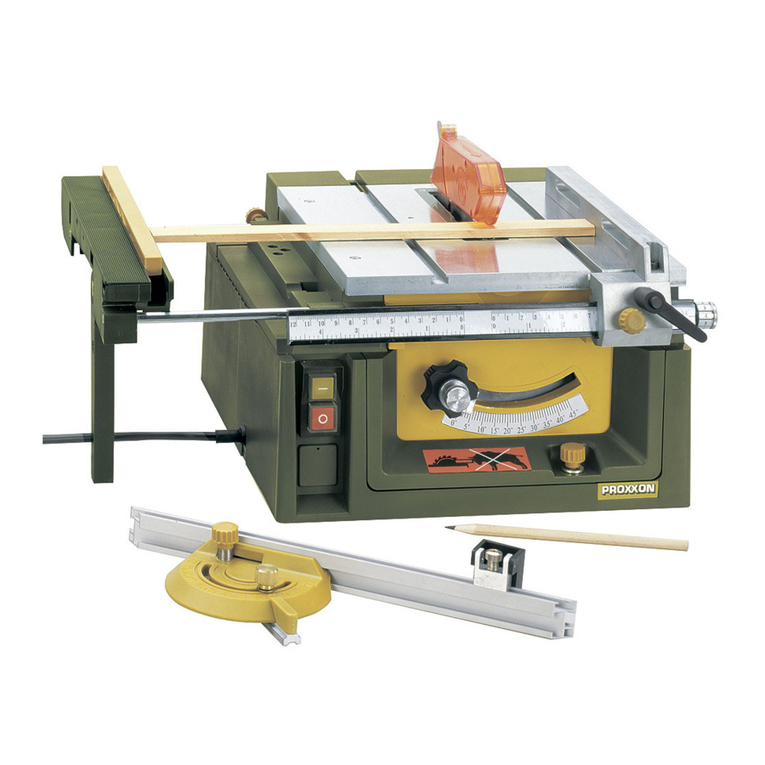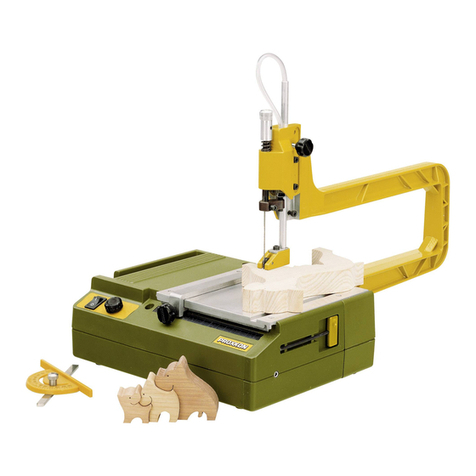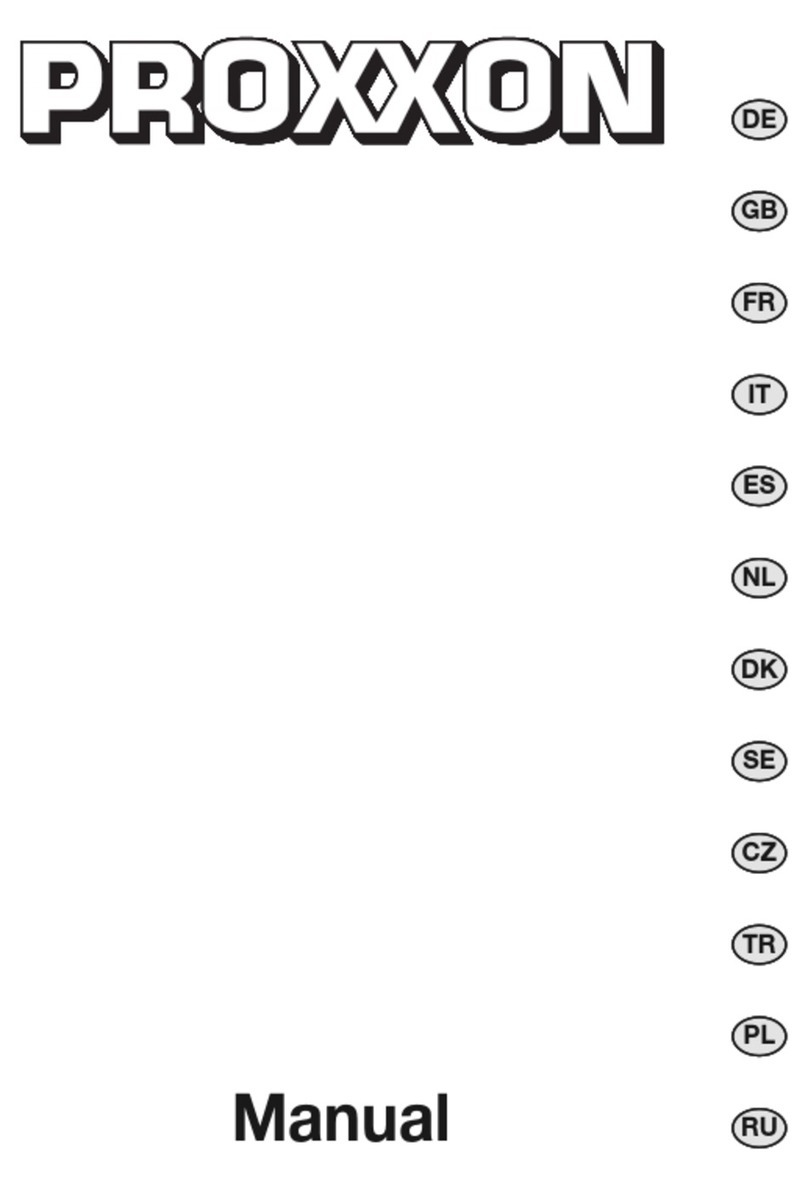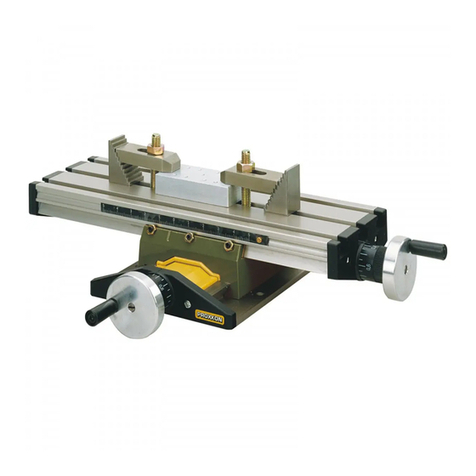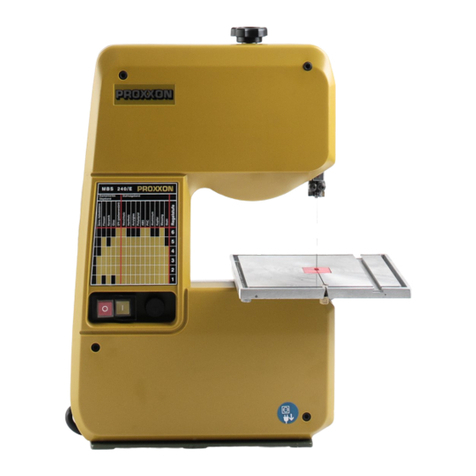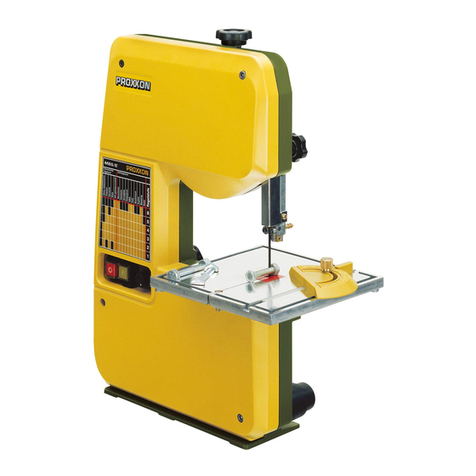10.1.3.1. Adjusting the limit stop scale (zero position)
For the reliable use of the scale 5 for the longitudinal stop, its
position must first be co-ordinated to the saw blade – there-
fore „zeroised“. This process is absolutely necessary after
the saw blade has been replaced with a saw blade of differ-
ent thickness, or if the limit stop was finely adjusted (see sec-
tion „Fine adjustment of the longitudinal stop“) at the knurled
screw 7 (fig. 10d).
Caution!
Make sure the mains plug is disconnected for all adjusting
work!
1. Make sure that locking handle 3 and knurled screw 4 are
released.
2. Move the longitudinal stop 1 with the left edge 6 over the
„0“ marking of the scale (either left or right from the saw
blade, depending on what is needed for the task) as
shown in fig. 10d and fix the position by tightening knurled
screw 4.
3. By turning the fine adjustment knob 7 bring the scale with
its arrested longitudinal stop into the position where the
side of the longitudinal stop facing the saw blade just
barely touches the saw blade. Please carefully lift the saw
blade guard 8 to do so, if necessary!
Now the distance between the saw blade and limit stop is „0“
as shown by the scale.
The limit stop can now be aligned with the help of the scale,
as described in the section „Adjusting the longitudinal stop
with the help of the scale“: The value read from the scale
now corresponds exactly to the distance longitudinal stop –
saw blade and thus the desired width of the work piece.
Caution!
It is possible that before adjustment in the zero position, the
scale is in a position where the longitudinal stop already
touches the saw blade before the left limit stop edge has
reached the „0“ position on the scale. In this case simply cor-
rect the scale position with the fine adjustment knob 7.
10.1.4. Fine adjustment of the longitudinal stop
If after the sawing process it is necessary to make minor
changes to the position of the limit stop (despite previous
careful adjustment) to achieve the desired width, it is possi-
ble to move the limit stop for a small amount in the desired
direction with the fine adjustment knob 7, see fig. 10d.
Please note: One complete revolution will move the limit stop
by 1 mm!
Caution! For this procedure, the lock handle 3 must be
released, but the knurled screw 4 must be tightened. After
adjustment is completed, the limit stop must be tightened
with locking handle 3 to continue sawing!
10.2. Auxiliary stop
Appropriate use of the auxiliary stop is made to be able to
easily cut somewhat larger work pieces as well. For this, the
saw table must be extended first, as described in the chapter
„Extendable saw table“; but the limit stop edge is not „sunk“ in
the extendable part by „pressing in“ but simply stays outside.
The distance to the saw blade determines the sawing width,
which can therefore be varied depending on by how much
the saw table is pushed in, or extended. To saw, always fix
the limit stop by tightening the knurled screw. See fig. 8b.
10.3. Angle stop
If it is necessary to cut a board at right angles, or a strip with
mitre cut, then this can be sawn by using the angle stop. This
runs in the guides provided either on the right or on the left of
the saw blade, as required.
1. Insert the angle stop in the guide 1 to the right or left of
the saw blade, see fig. 11.
2. Release knurled screw 2, set the desired angle at the
scale 3 and retighten the knurled screw.
10.4. Working with the limit stop strip with clamping
piece for angle stop
Ideal, e.g. if many strips will be cut with mitre and equal
length, see fig. 12. The limit stop strip is connected to the
angle stop 2 to do this. The clamping piece 3 is used as
length stop.
10.4.1. Assembly and adjustment
Push the limit stop strip 1 into the guide of the angle stop 2
(see fig. 13a/b) and insert together in the guide in the saw
table. Caution! The knurled screw must be in the „released“
position otherwise the limit stop cannot be inserted.
1. To adjust the angle, release knurled screw 4 and set the
desired value at the scale 5. Retighten knurled screw 4.
Adjust position of limit stop strip 1 and clamp firmly by
tightening the knurled screw 3.
2. Caution! Make sure at all costs that the limit stop strip 1 is
correctly seated in the receiver of the angle stop 2 and
that there is sufficient distance from the end of the limit
stop strip to saw blade 7! In all cases: Switch off the saw
and disconnect the mains plug and test to see that the
limit stop strip does by no means touch the saw blade or
the saw blade guard, see fig. 13c!
3. Insert clamping piece 8 in the guide of the limit stop strip
(fig. 13d) and determine the position in dependence on
the desired work piece length. Please note: The hexagon
nut travels in the guide of the limit stop! Fix the clamping
piece with the knurled screw 9.
While sawing, the piece to be sawn is pushed up to the limit
stop and can be crosscut as shown in fig. 12.
11. Sawing
Caution!
Your FET may not be used for slitting (notch completed in the
work piece)! To groove or notch, please by all means use the
Proxxon groove-milling device (article number 28736).
19

